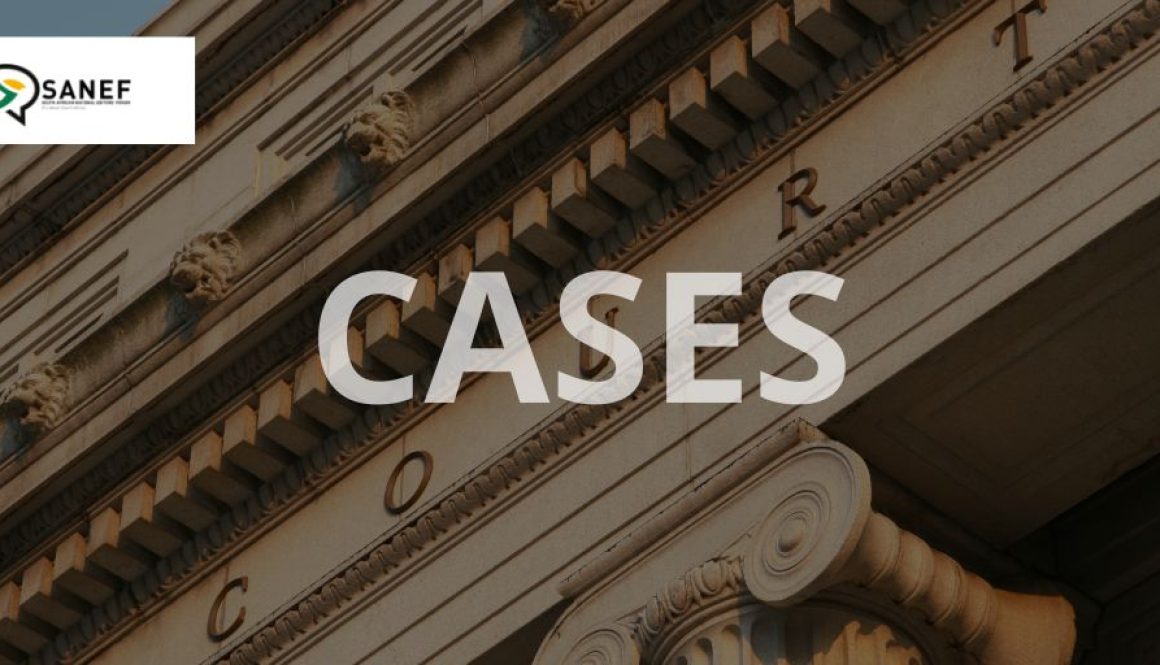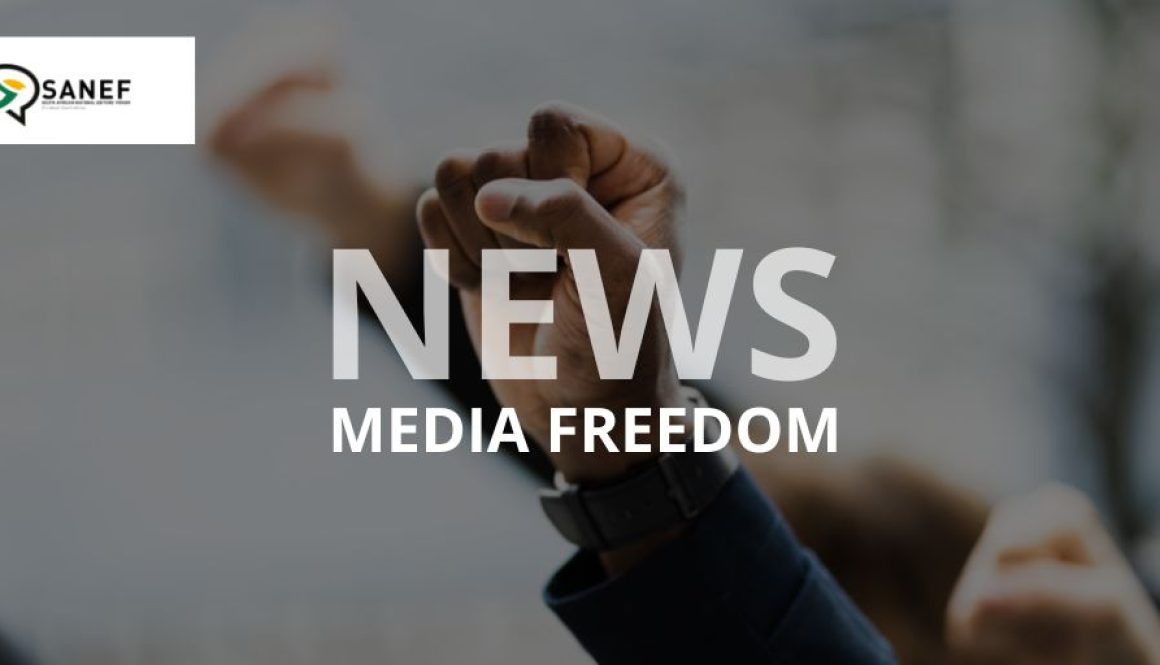President of SAFA, Kirsten Nematandani’s speech delivered at the Wanderers Stadium, Johannesburg on Sunday 25 July 2010 to the South African National Editors’ Forum
It’s indeed an honour for me to be among friends. Yes, fellow South Africans you are our friends. I’m truly happy to be with you today. Thank you for inviting me to speak to you today.
Before I go any further, allow me to congratulate Mr Mondli Makhanya for his election as SANEF’s brand new President as well as your predecessor Mr Jovial Rantao and to also congratulate SANEF for holding regular elections, that is what we call a truly democratic organisation that upholds the spirit of good Governance at all times, indeed the people shall govern. We sincerely thank every SANEF member for the support given to the great World Cup . Your contribution played a significant role in the success of the World’s greatest Show piece indeed the most popular sport on mother earth.. Thank you for helping us to be unashamedly South African and to be proud of it.
Let me also restate the commitment the new Safa leadership made in Parliament shortly after being elected in September last year. We said we would ensure that the 2010 Football World Cup would leave a lasting legacy that the World Cup profits would be used for the development of our members and not be distributed to certain members and individuals.
We also pledged to establish a culture of accountability and to rid Safa of the nepotism and cronyism which had established itself at the highest levels of football.
Nothing has changed. We’re still committed to these principles. They still drive us. Every day. We’re not in football administration for ourselves, but for our players, parents, supporters and our country.
When we met the Parliamentary Sports Portfolio Committee in Cape Town earlier this week, we once again ourselves recommitted to these goals. Honouring them, following them, living and breathing them will empower us to reach some of the goals set for us by our Technical Director Serame Letsoaka.
If we follow his road map, and if our new national coach Pitso Mosimane coaches the national team as well as we are confident he can, we will break into the Top 40 Fifa nations in 2014.
This is a tall order, but it’s a goal well worth pursuing. Remember that we’ve moved to the 66th spot, from the 83rd position we occupied before the World Cup began. So are journey to has already begun,
According to Mr Letsoaka’s projections, we should play in the World Cup finals in 2022. Some people may think that we are silly and getting far ahead of ourselves in setting these goals. But we can dream and push towards that dream. We want to be the leading soccer nation in Africa and also the first African national to play in the match to decide world football’s richest prize.
When national team coach Pitso Mosimane spoke about the South African team this week, he recommended that PSL teams should use a maximum of three foreign players, and agree on fielding at least two under-23 players in their starting line-up. There’s good reason for this: it’s in our own interest to create opportunities for younger players to have as much game time as possible so that they can go on to higher honours.
Pitso also spoke about a common South African brand of football. He’s right. We cannot have one national junior team playing one style, and another playing a different formation. Getting players who represent South Africa used to one brand of football will ensure continuity. Just look what this uniform brand of football did for Spain, Germany and the Netherlands. If it worked for them it can and should work for us.
We will also establish and regulate a coaching licensing system in South Africa. We will also strive to ensure that all clubs have junior teams and leagues. We will also implement a three-tier academy structure that will comprise a national academy, provincial academies and a PSL academy.
But our development will not only focus on players. We will improve the training and quality of our referees. We had two officials taking part in the World Cup. This was good, but we can do better. We will also equip our administrators to become better.
To realize our dreams, it’s essential that we start building for the future. We’re starting to get our development house in order, with an intervention at the foundation level.
Together with Fifa, we’ve launched the Grassroots Programme. The National Departments of Sports and Recreation, Health and Education are also involved.
This programme concentrates on the 6-12 age group. Football coaches will tell you that this is the most impressionable group. Two camps were held in May, before the World Cup began: one in Pretoria and one in Mafikeng. The attendance was encouraging. We’ll have more of these camps around the country.
The emphasis at these camps is placed on teaching ball skills and fair play. You’d be surprised to see at senior level how many players can’t execute the basics such as trapping the ball or taking a throw-in. We impart these skills in a non-competitive environment because we are not as interested in winning as in teaching skills and encouraging young players to explore what they can do with the ball in different situations.
Later, when they’ve move to the 14 age group, The Golden Age, we’ll bring in the competitive element. The U/16 Adolescent Stage and Then Youth U/18 Professional.Then the players will be ready and better equipped to play competitive football.
This intervention will ensure that we have a steady stream of skilled and disciplined young players into South African football.
I should add that we know the decisive part the non-racial sports movement played in bringing liberation to South Africa. Therefore we know that football is more than a game, and that through the Grassroots Programme we can inculcate social and nation-building values such as respect, discipline, democracy, transparency, playing to the laws of the game, team spirit and non-discrimination.
But we cannot do this on our own. We encourage parents to participate in these Grassroots Football Programmes. Coaches and aspirant coaches attending will earn a coaching certificate, buy they’ll be given coaching skills that will make them better coaches.
At schoolboy level, we want to encourage so-called rugby playing schools to introduce football and to let the children decide if they want to play football or rugby. If you’ve read the Afrikaans press, you would have noticed that quite a few people have written to newspapers asking that football be introduced at schools. We’re excited by this. We intend having discussions with National Ministers of Sport, Education, Health, and Public Works to explore how we can take football to as many schools as possible.
In years gone by football games at mainly black schools drew big crowds. Some of that passion is gone. We need to regain it. I think we should also take a leaf from the book of rugby-playing white schools. They’re doing something right because they draw big crowds, sometimes bigger than at PSL games. We want to learn from them and implement some of the ideas that worked for them.
We are not too shy to say that we can and want to learn. This is why we look forward to how you report on us because we are in this together.
Thank you Ladies and Gentlemen.
Socials
Twitter: @SAEditorsForum
Email: [email protected]
Website: SANEF




